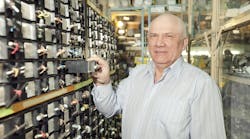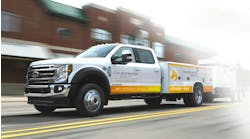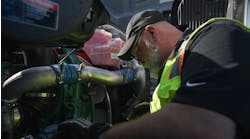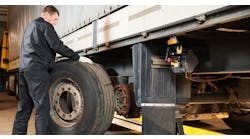If you manage a fleet with newer equipment and no weird units, thank your lucky stars. Why? Because in 80 to 95 percent of the cases where you need of a part to complete a repair job, you can find that part with a simple phone call or three.
Managers of specialized fleets, old fleets and fleets with a wide variety of vehicles, on the other hand, spend much of their time beating the bushes for spare parts.
Parts Sources
Years ago, Diamond Reo was a Class 8 truck that was popular with some fleet managers. Alas, the company hit hard times.
After its bankruptcy, I remember a company coming in to buy the engineering drawings, some tooling and the name. I assumed they wanted to have their own truck manufacturing company. Actually, it turned out they were looking for a big, long payoff from the parts business.
I hope that company did well because that meant owners of Diamond Reo trucks had a source for parts.
Another entrepreneur had a business that focused solely on buying old industrial brands that fell on hard times just for their parts businesses.
Parts and Profits
When you look at the finances of almost any original equipment manufacturer (OEM), you’ll see something interesting. They seem to universally make most of their money over the parts and service counter.
Even the GE division that makes turbines trumpeted their massive billion dollar backlog of orders and pointedly said a substantial portion were from “high profit,” long-term service and parts contracts.
Since we tend to buy the lowest price part that meets the spec required by the OEM, they need to sell their equipment cheaply and make their profit elsewhere.
Wiring Systems
I once worked for a manufacturer of wiring harnesses for specialty trucks and trailers. The company made thousands of identical wiring systems to speed the assembly of the equipment.
One customer of forklift trucks asked us to be their go-to vendor for wire harnesses for obsolete units. We would get a drawing and would make the harness using modern materials and techniques for forklifts as old as 1928.
This forklift company had a commitment to their customers for the long haul.
Today
What is happening these days?
In an attempt to shore-up profits, OEMs are optimizing their supply chains and reducing the inventory of slow-moving parts that they keep on hand.
Using the techniques pioneered by Sears in the 1930s and Walmart and all of their big-box brethren today, companies analyze sales, turns and even sales per square foot and limit the stock level. Eliminating the slow-moving parts is the low-hanging fruit of the process.
Everyone in the supply chain, from the OEM to the distributer to the local dealer to you, is doing this.
Keeping slow-moving parts is almost a community service within the equipment field nowadays, although not quite, because they still can bring significant profits.
Things to Do
How can we deal with the issue of slow-moving parts? The first and foremost activity is to look deeply at your own slow-moving parts.
Your success depends on having the right parts at the right time. If not, you will have the downtime, an idle driver and an irate customer.
Do you have equipment with high downtime consequences? If so, make sure you can service them.
Here some suggestions for help doing this:
- Know the lead time and availability on critical parts.
- Know others who own the same machine.
- Locate parts dealers for used, rebuilt and rebuildable parts.
- Sell your surplus parts on eBay and other parts-orientated auction sites so people get to know you as a player.
- Build a good reputation on these sites.
- Gain some expertise in reverse engineering the simpler parts.
Additionally, be aware of the cost bias in stocking slow-moving parts. This bias has people overstocking lower cost parts and understocking high cost parts.
Be mindful that the lead times on parts for your older units are highly variable.
Finally, buy units from OEMs with demonstrated support for their older equipment.
Joel Levitt is director of international projects for Life Cycle Engineering (www.lce.com), an organization that provides consulting, engineering, applied technology and education solutions that deliver lasting results. Previously, he was president of Springfield Resources (www.maintenancetraining.com), a management consulting firm.



